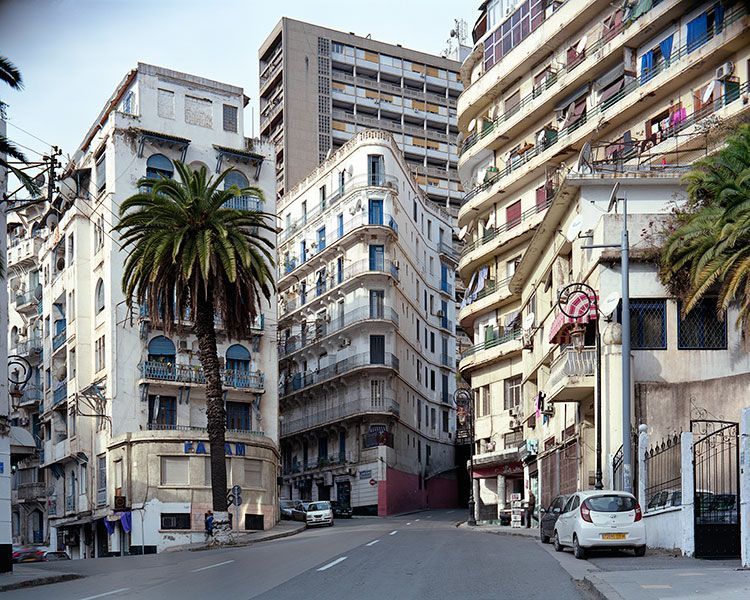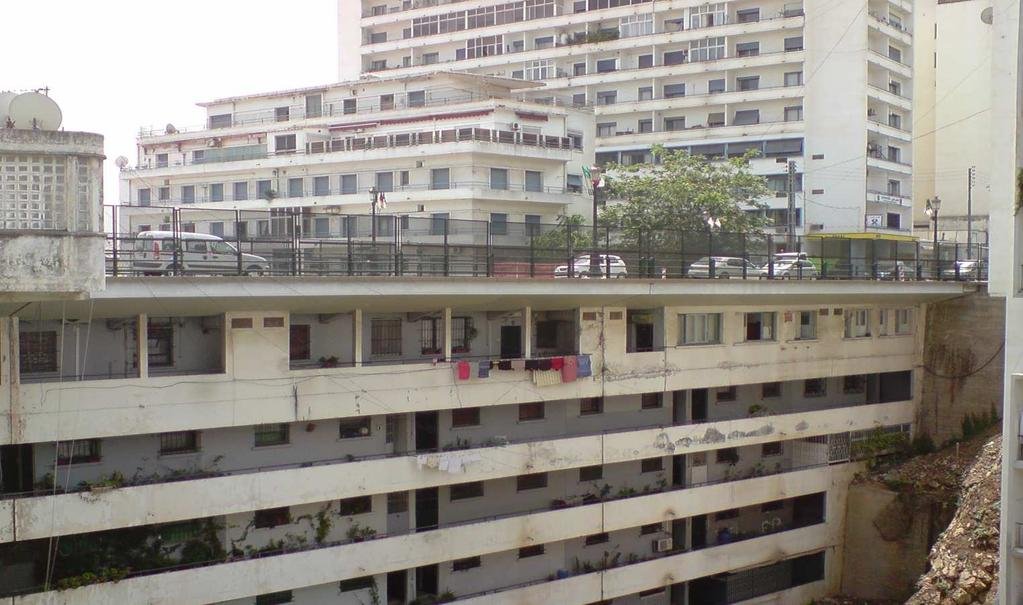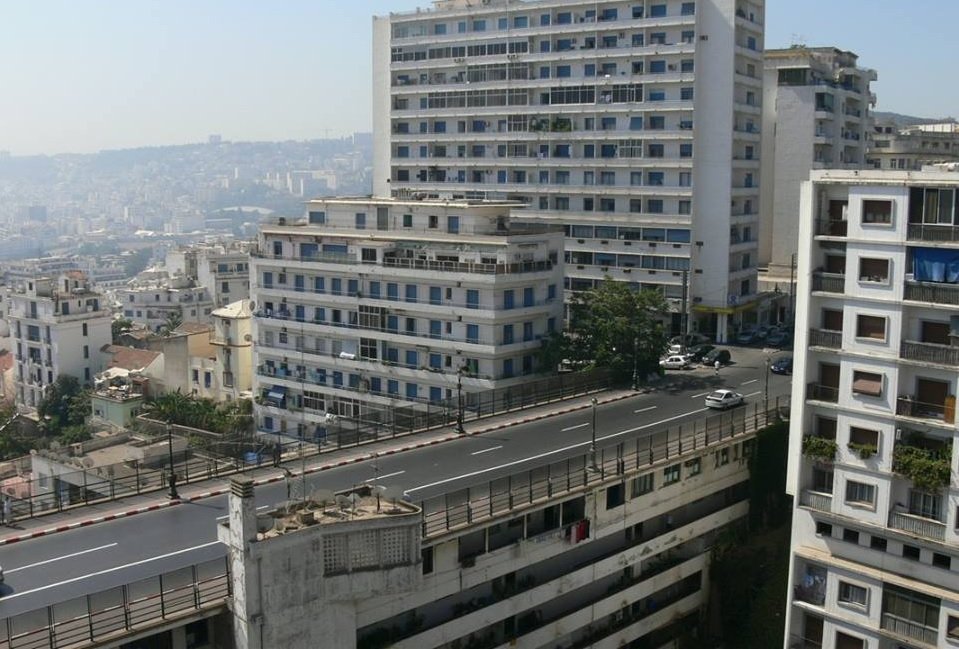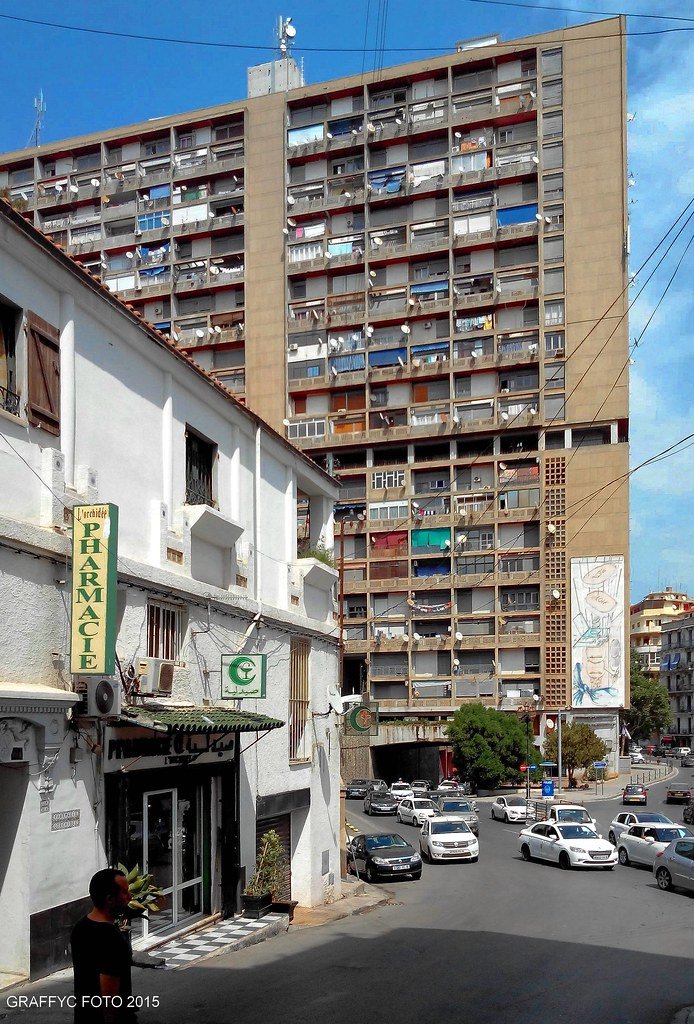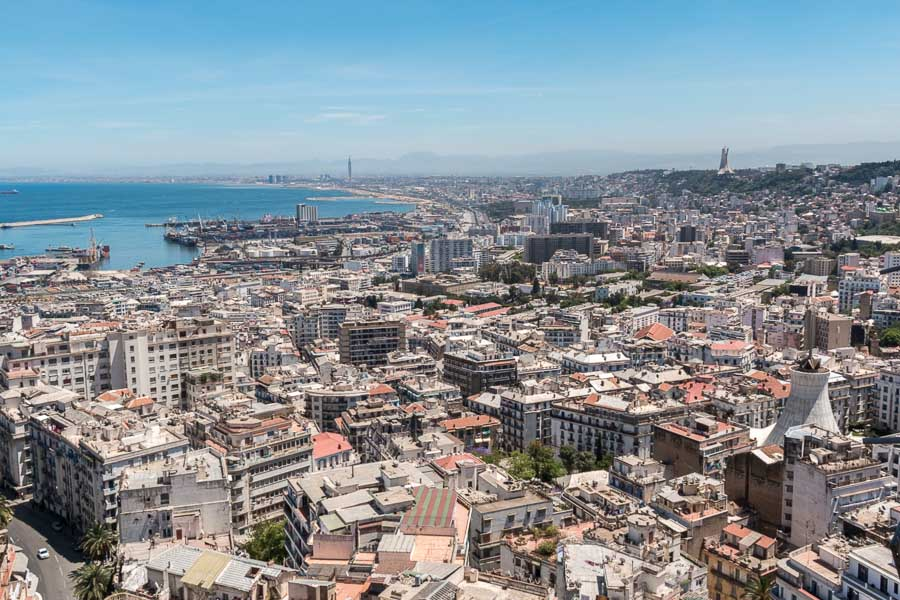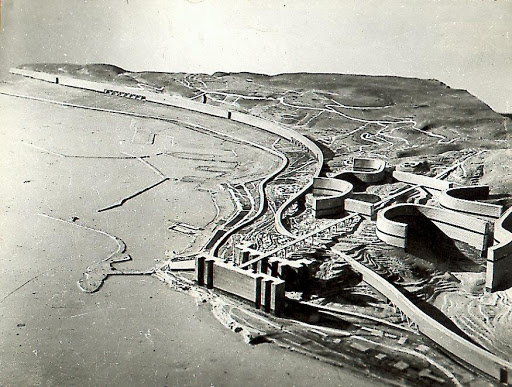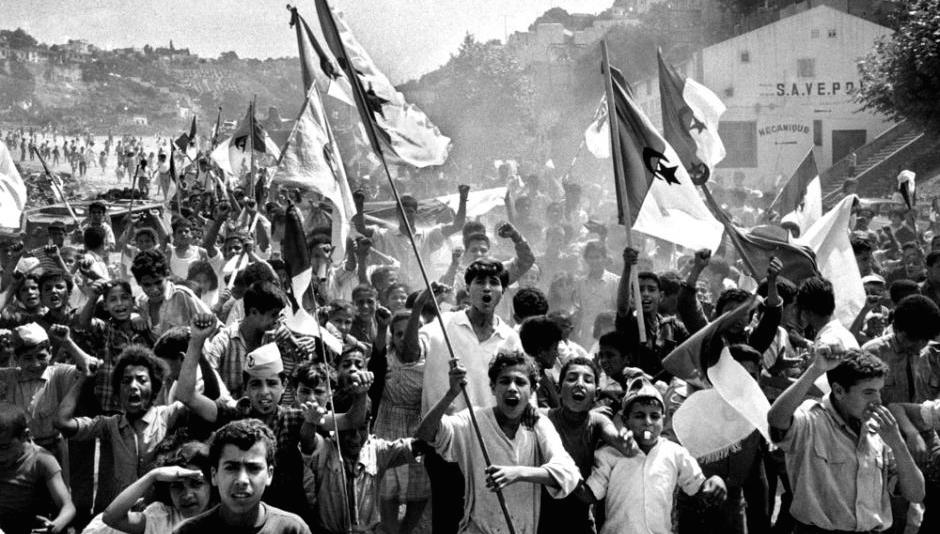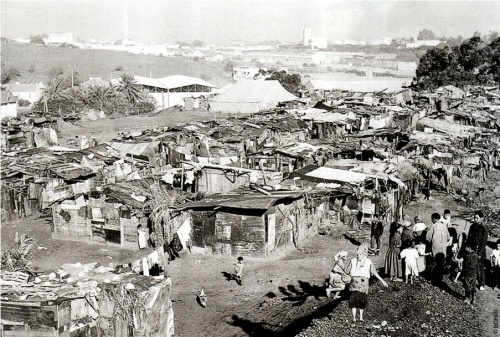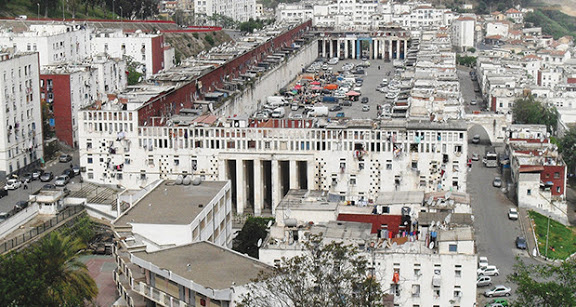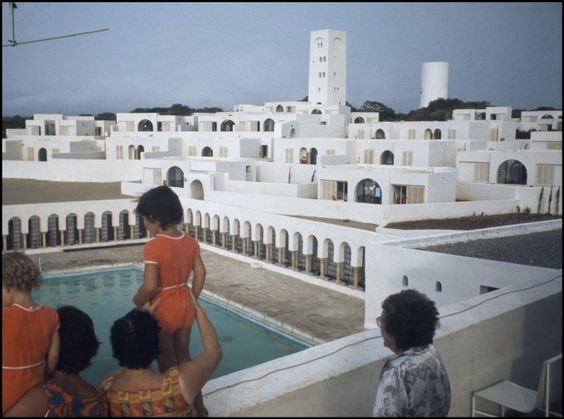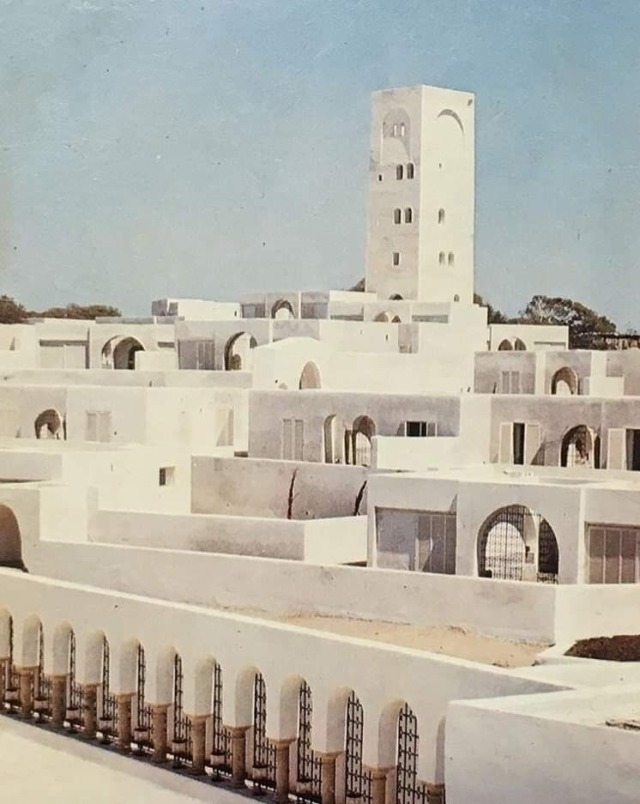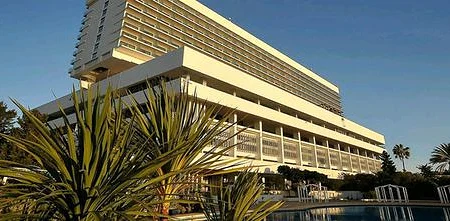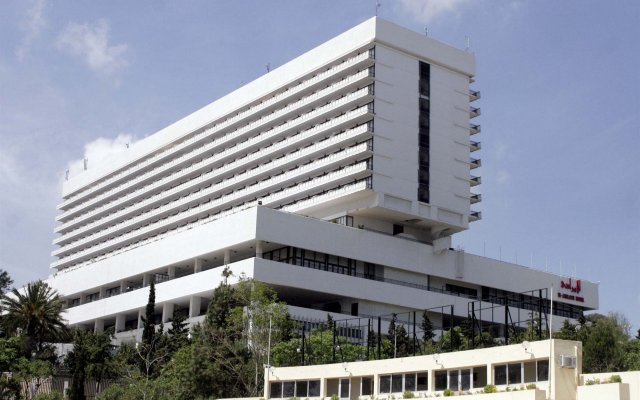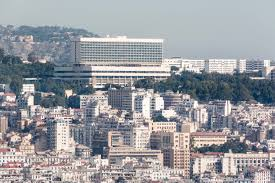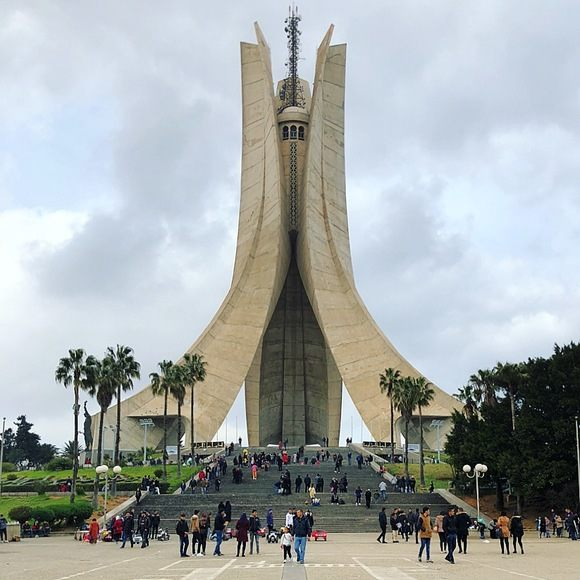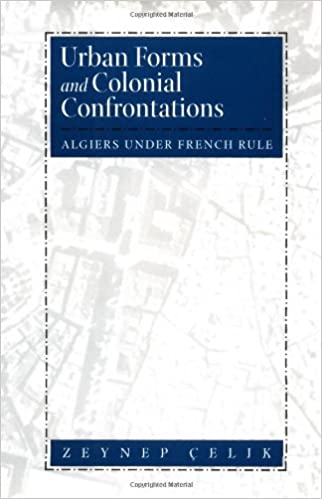There was a time when colonialism blew up and everything seemed possible.
Algeria was, in the words of @malikarahal’s new book, THE COUNTRY OF THE FUTURE https://abs.twimg.com/emoji/v2/... draggable="false" alt="🇩🇿" title="Flagge von Algerien" aria-label="Emoji: Flagge von Algerien">
https://abs.twimg.com/emoji/v2/... draggable="false" alt="🇩🇿" title="Flagge von Algerien" aria-label="Emoji: Flagge von Algerien"> https://abs.twimg.com/emoji/v2/... draggable="false" alt="⚡️" title="Hochspannungszeichen" aria-label="Emoji: Hochspannungszeichen">
https://abs.twimg.com/emoji/v2/... draggable="false" alt="⚡️" title="Hochspannungszeichen" aria-label="Emoji: Hochspannungszeichen"> https://abs.twimg.com/emoji/v2/... draggable="false" alt="🚀" title="Rakete" aria-label="Emoji: Rakete">
https://abs.twimg.com/emoji/v2/... draggable="false" alt="🚀" title="Rakete" aria-label="Emoji: Rakete">
It’s time for our next walk through Algiers, where we explore its role as a laboratory for modernist architecture
Algeria was, in the words of @malikarahal’s new book, THE COUNTRY OF THE FUTURE
It’s time for our next walk through Algiers, where we explore its role as a laboratory for modernist architecture
This time, we will be starting at the Grande Poste and walking all the way up to the Hôtel Aurassi, looking at some buildings before and after independence.
And when I say up, I mean up: the steep climb matters to this story
And when I say up, I mean up: the steep climb matters to this story
Because of its dramatic topography, Algiers was the location of much architectural experimentation in the mid-20th century.
For instance, in 1952 they built a building... that was also a bridge, L& #39;IMMEUBLE-PONT
For instance, in 1952 they built a building... that was also a bridge, L& #39;IMMEUBLE-PONT
This made the winding road in the heights of Telemly straighter and um, bonus apartments I guess?
Next to it is another famous building built 1952-1955: l& #39;Aérohabitat. The middle floor was meant to be an & #39;inside street& #39; with shops so people wouldn& #39;t have to leave
Next to it is another famous building built 1952-1955: l& #39;Aérohabitat. The middle floor was meant to be an & #39;inside street& #39; with shops so people wouldn& #39;t have to leave
The concept of a single, ginormous building in which all of your needs are met might sound familiar: architects Louis Miquel et José Ferrer-Laloë were influenced by Le Corbusier& #39;s plans for an & #39;unité d& #39;habitation& #39;, like the Cité Radieuse in Marseille (also 1952)
If you& #39;re ever in Algiers, the Aérohabitat is quite popular because from the top you get great views of the city
(you may have to drop a coin to a kid to ride up the elevator but it& #39;s worth it)
(you may have to drop a coin to a kid to ride up the elevator but it& #39;s worth it)
Le Corbusier had a radical plan for Algiers which was never implemented, which involved razing the Casbah and building a giant highway over it.
People wearing chic designer glasses LOVE talking about this and saying that Le Corbusier was so bad omg, like really bad (but hot)
People wearing chic designer glasses LOVE talking about this and saying that Le Corbusier was so bad omg, like really bad (but hot)
Le Corbusier& #39;s plan would have been dreadful but sometimes people make this into an argument that
modernism = destruction of tradition = colonialism = bad
But lots of people in the 1950s wanted to smash the world around them and build a better one, including revolutionaries
modernism = destruction of tradition = colonialism = bad
But lots of people in the 1950s wanted to smash the world around them and build a better one, including revolutionaries
By the 1950s, the contradictions of colonialism were exploding. Impoverished Algerian peasants, dispossessed of their land by settler colonialism, moved to cities and crowded into slums (the one pictured here is in Hussein Dey).
In 1954, the FLN launched an insurrection against French rule: the Algerian Revolution. The mass violence of warfare triggered huge population movements. Most Algerians in rural areas were either forcibly displaced from their land by the French army or fled for safety
To keep Algeria French, city planners and architects experimented with radical social housing plans that would rehouse the slums and gain the support of Algerians. One of these is our next destination along this walk:
~~ Climat de France ~~ on the heights of Bab el Oued
~~ Climat de France ~~ on the heights of Bab el Oued
Completed in 1957 by architect Fernand Pouillon, Climat de France (a name I have always loved), now known as Oued Koriche, was a monumental social housing project of 4,000 apartments.
As Pouillon said, & #39;Maybe for the first time in the modern era we had men inhabit a monument.& #39;
As Pouillon said, & #39;Maybe for the first time in the modern era we had men inhabit a monument.& #39;
Pouillon himself was no colonial stooge. After independence in 1962, he would be commissioned by the Algerian government to build a number of famous tourist complexes, like these built in Zéralda and Sidi-Fredj, with rather bold interpretations of traditional architecture
The desire to make Algeria modern, shiny and bright, free of a dark and oppressive past, is not the same as colonialism, and there was some overlap in between a late colonial and an early independent embrace of modernism.
This brings us to our last stop: l& #39;Hôtel el Aurassi
This brings us to our last stop: l& #39;Hôtel el Aurassi
Designed by Italian architect Luigi Moretti, famous for many modernist complexes in Milan and Rome, El Aurassi was completed in 1975 under president Houari Boumedienne as a showcase for foreign visitors to Algiers. It& #39;s, um, big. And has great views (again)
Independent Algeria& #39;s leaders commissioned many modernist buildings, there& #39;s some great pieces for instance on Oscar Niemeyer& #39;s complexes in Algeria https://www.wallpaper.com/architecture/oscar-niemeyer-algeria-jason-oddy-book">https://www.wallpaper.com/architect...
We might also consider the Monument to the Martyr (مقام الشهيد, built for the 20th anniversary of Algerian independence in 1982
After my first thread, somebody said I was only celebrating colonial architecture.
How do we build a city beautiful for all? How do we build decent homes? These questions are especially visible under colonialism, but they occur everywhere https://twitter.com/ArthurAsseraf/status/1304016471492829184?s=20">https://twitter.com/ArthurAss...
How do we build a city beautiful for all? How do we build decent homes? These questions are especially visible under colonialism, but they occur everywhere https://twitter.com/ArthurAsseraf/status/1304016471492829184?s=20">https://twitter.com/ArthurAss...
In the 20th century and until now, many people thought Algiers was flawed, unsatisfactory, city inhabited by the wrong people, that needed to be drastically changed. Its modernist architecture is a museum to the many attempts to change it https://twitter.com/ArthurAsseraf/status/1304439300763930626?s=20">https://twitter.com/ArthurAss...
The question of who has power to design a city, who gets removed, who gets to appreciate the beauty and who has to provide the labour to maintain it: these issues reached a climax with Algeria& #39;s struggle for independence, but they did not go away after
That& #39;s it for today!
That& #39;s it for today!
Some resources!
On colonial urbanism and modernist housing projects, Zeynep Çelik& #39;s "Urban Forms and Colonial Confrontations"
On colonial urbanism and modernist housing projects, Zeynep Çelik& #39;s "Urban Forms and Colonial Confrontations"
On Fernand Pouillon and his works in Algeria see this article by Myriam Maachi Maïza (in French) https://journals.openedition.org/insaniyat/6707 ">https://journals.openedition.org/insaniyat...
On displacement, the Algerian War and the remaking of space, Samia Henni& #39;s Architecture of Counterrevolution https://press.uchicago.edu/ucp/books/book/distributed/A/bo28189991.html">https://press.uchicago.edu/ucp/books...
And on post-independence socialist architecture see Sheila Crane, & #39;Algerian Socialism and the Architecture of Auto-Gestion& #39; https://journal.eahn.org/articles/10.5334/ah.345/">https://journal.eahn.org/articles/...

 Read on Twitter
Read on Twitter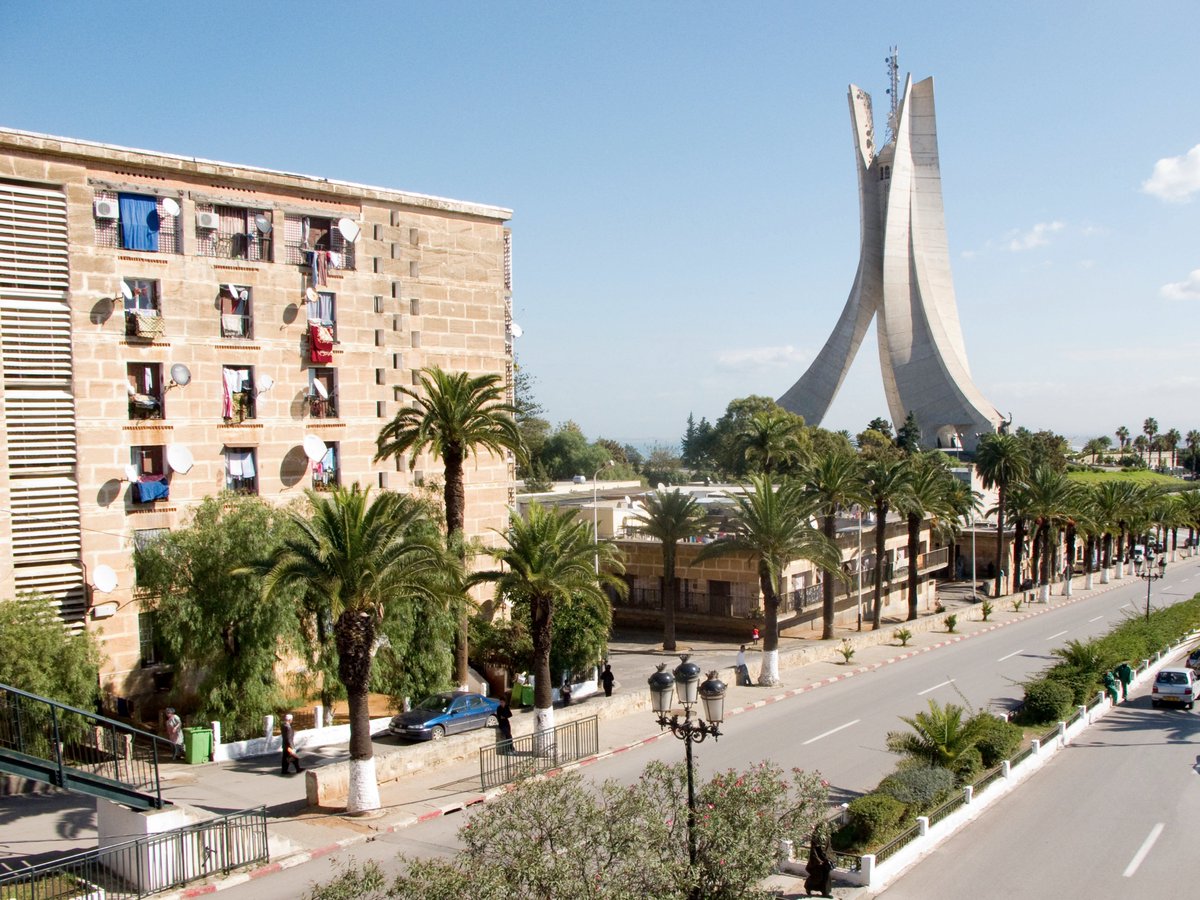 https://abs.twimg.com/emoji/v2/... draggable="false" alt="⚡️" title="Hochspannungszeichen" aria-label="Emoji: Hochspannungszeichen">https://abs.twimg.com/emoji/v2/... draggable="false" alt="🚀" title="Rakete" aria-label="Emoji: Rakete">It’s time for our next walk through Algiers, where we explore its role as a laboratory for modernist architecture" title="There was a time when colonialism blew up and everything seemed possible. Algeria was, in the words of @malikarahal’s new book, THE COUNTRY OF THE FUTURE https://abs.twimg.com/emoji/v2/... draggable="false" alt="🇩🇿" title="Flagge von Algerien" aria-label="Emoji: Flagge von Algerien">https://abs.twimg.com/emoji/v2/... draggable="false" alt="⚡️" title="Hochspannungszeichen" aria-label="Emoji: Hochspannungszeichen">https://abs.twimg.com/emoji/v2/... draggable="false" alt="🚀" title="Rakete" aria-label="Emoji: Rakete">It’s time for our next walk through Algiers, where we explore its role as a laboratory for modernist architecture">
https://abs.twimg.com/emoji/v2/... draggable="false" alt="⚡️" title="Hochspannungszeichen" aria-label="Emoji: Hochspannungszeichen">https://abs.twimg.com/emoji/v2/... draggable="false" alt="🚀" title="Rakete" aria-label="Emoji: Rakete">It’s time for our next walk through Algiers, where we explore its role as a laboratory for modernist architecture" title="There was a time when colonialism blew up and everything seemed possible. Algeria was, in the words of @malikarahal’s new book, THE COUNTRY OF THE FUTURE https://abs.twimg.com/emoji/v2/... draggable="false" alt="🇩🇿" title="Flagge von Algerien" aria-label="Emoji: Flagge von Algerien">https://abs.twimg.com/emoji/v2/... draggable="false" alt="⚡️" title="Hochspannungszeichen" aria-label="Emoji: Hochspannungszeichen">https://abs.twimg.com/emoji/v2/... draggable="false" alt="🚀" title="Rakete" aria-label="Emoji: Rakete">It’s time for our next walk through Algiers, where we explore its role as a laboratory for modernist architecture">
 https://abs.twimg.com/emoji/v2/... draggable="false" alt="⚡️" title="Hochspannungszeichen" aria-label="Emoji: Hochspannungszeichen">https://abs.twimg.com/emoji/v2/... draggable="false" alt="🚀" title="Rakete" aria-label="Emoji: Rakete">It’s time for our next walk through Algiers, where we explore its role as a laboratory for modernist architecture" title="There was a time when colonialism blew up and everything seemed possible. Algeria was, in the words of @malikarahal’s new book, THE COUNTRY OF THE FUTURE https://abs.twimg.com/emoji/v2/... draggable="false" alt="🇩🇿" title="Flagge von Algerien" aria-label="Emoji: Flagge von Algerien">https://abs.twimg.com/emoji/v2/... draggable="false" alt="⚡️" title="Hochspannungszeichen" aria-label="Emoji: Hochspannungszeichen">https://abs.twimg.com/emoji/v2/... draggable="false" alt="🚀" title="Rakete" aria-label="Emoji: Rakete">It’s time for our next walk through Algiers, where we explore its role as a laboratory for modernist architecture">
https://abs.twimg.com/emoji/v2/... draggable="false" alt="⚡️" title="Hochspannungszeichen" aria-label="Emoji: Hochspannungszeichen">https://abs.twimg.com/emoji/v2/... draggable="false" alt="🚀" title="Rakete" aria-label="Emoji: Rakete">It’s time for our next walk through Algiers, where we explore its role as a laboratory for modernist architecture" title="There was a time when colonialism blew up and everything seemed possible. Algeria was, in the words of @malikarahal’s new book, THE COUNTRY OF THE FUTURE https://abs.twimg.com/emoji/v2/... draggable="false" alt="🇩🇿" title="Flagge von Algerien" aria-label="Emoji: Flagge von Algerien">https://abs.twimg.com/emoji/v2/... draggable="false" alt="⚡️" title="Hochspannungszeichen" aria-label="Emoji: Hochspannungszeichen">https://abs.twimg.com/emoji/v2/... draggable="false" alt="🚀" title="Rakete" aria-label="Emoji: Rakete">It’s time for our next walk through Algiers, where we explore its role as a laboratory for modernist architecture">
 https://abs.twimg.com/emoji/v2/... draggable="false" alt="⚡️" title="Hochspannungszeichen" aria-label="Emoji: Hochspannungszeichen">https://abs.twimg.com/emoji/v2/... draggable="false" alt="🚀" title="Rakete" aria-label="Emoji: Rakete">It’s time for our next walk through Algiers, where we explore its role as a laboratory for modernist architecture" title="There was a time when colonialism blew up and everything seemed possible. Algeria was, in the words of @malikarahal’s new book, THE COUNTRY OF THE FUTURE https://abs.twimg.com/emoji/v2/... draggable="false" alt="🇩🇿" title="Flagge von Algerien" aria-label="Emoji: Flagge von Algerien">https://abs.twimg.com/emoji/v2/... draggable="false" alt="⚡️" title="Hochspannungszeichen" aria-label="Emoji: Hochspannungszeichen">https://abs.twimg.com/emoji/v2/... draggable="false" alt="🚀" title="Rakete" aria-label="Emoji: Rakete">It’s time for our next walk through Algiers, where we explore its role as a laboratory for modernist architecture">
https://abs.twimg.com/emoji/v2/... draggable="false" alt="⚡️" title="Hochspannungszeichen" aria-label="Emoji: Hochspannungszeichen">https://abs.twimg.com/emoji/v2/... draggable="false" alt="🚀" title="Rakete" aria-label="Emoji: Rakete">It’s time for our next walk through Algiers, where we explore its role as a laboratory for modernist architecture" title="There was a time when colonialism blew up and everything seemed possible. Algeria was, in the words of @malikarahal’s new book, THE COUNTRY OF THE FUTURE https://abs.twimg.com/emoji/v2/... draggable="false" alt="🇩🇿" title="Flagge von Algerien" aria-label="Emoji: Flagge von Algerien">https://abs.twimg.com/emoji/v2/... draggable="false" alt="⚡️" title="Hochspannungszeichen" aria-label="Emoji: Hochspannungszeichen">https://abs.twimg.com/emoji/v2/... draggable="false" alt="🚀" title="Rakete" aria-label="Emoji: Rakete">It’s time for our next walk through Algiers, where we explore its role as a laboratory for modernist architecture">
